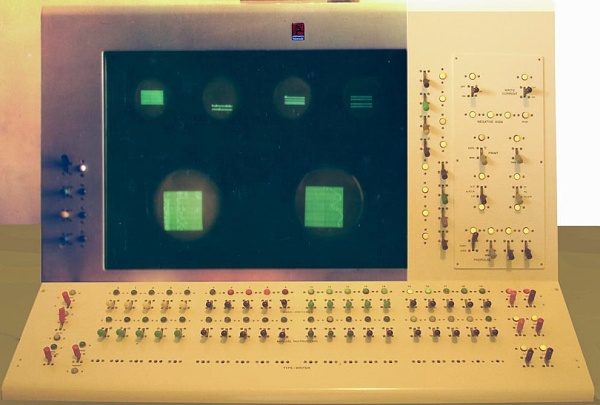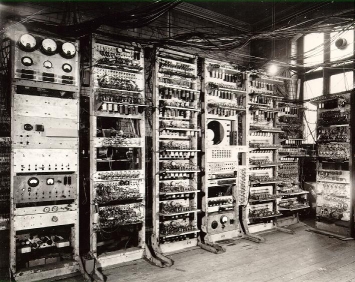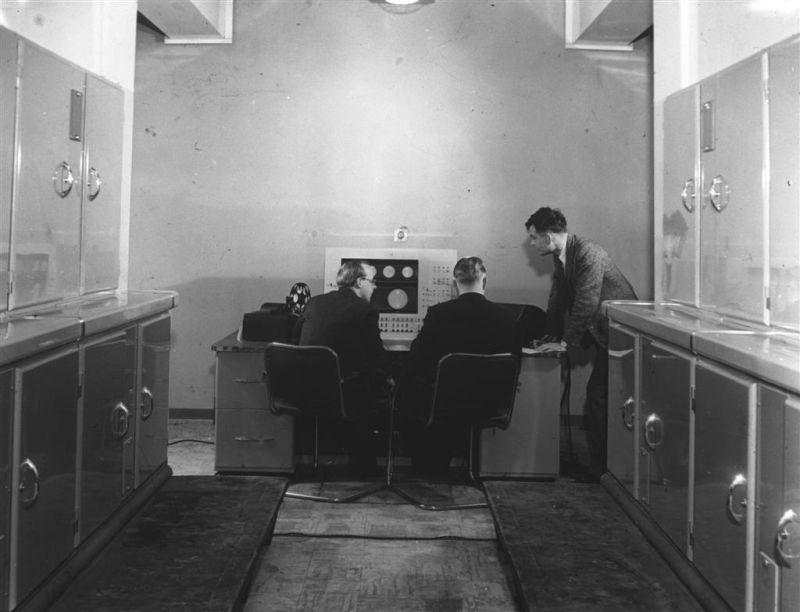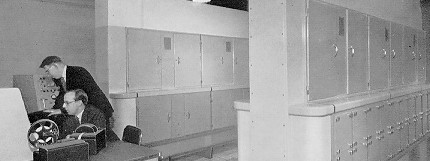Who was First?
Chris Malcolm, in his excellent article titled “Who Made the First Computer,” | Article | makes the following observations:
“The Manchester SSEM (“Baby”)
On 21st June 1948 the first stored program ran on the Small-Scale Experimental Machine (SSEM), the precursor of the Manchester Mk 1. This SSEM was the first machine that had all the components now classically regarded as characteristic of the basic computer, most importantly program storage in the same form as data.
So the Manchester SSEM was the first to work. Others followed rapidly.
The Manchester MU1
By April 1949 the Manchester Mark 1 had been finished and was generally available for scientific computation in the University. With the integration of a high speed magnetic drum by the autumn (the ancestor of today’s disc) this was the first machine with a fast electronic and magnetic two-level store (i.e. the capability for virtual memory). It in turn was the basis of the first commercially available computer, the Ferranti Mark 1, the first machine off the production line being delivered in February 1951.”
He goes on to make further mention of the Ferranti Mark 1”
“The Ferranti Mk 1
In February of 1951 The Ferranti Mark 1, developed from the Manchester Mark 1, delivered its first machine off the production line. This is claimed to be the first commercially available computer, just beating the US UNIVAC.”
(Note: Remington Rand’s UNIVAC 1 was delivered to the U.S. Census Bureau in June of 1951, four months after the delivery of the Ferranti Mark 1, making it the second commercial computer in the world and the first in North America.)

The Early Ferranti Mark 1 Computers
There were two Ferranti Mark 1 computers built. The first went to the University of Manchester whose Small-Scale Experimental Machine (SSEM) or “Baby”, also called the Manchester Automatic Digital Machine or MADM, was the genesis or prototype for the Ferranti Mark 1.
The second Mark 1 was originally purchased by the British government for the Atomic Energy Research Establishment but that contract was cancelled thus making the computer available to the University of Toronto.
After delivering the two Mark 1’s, the computer underwent some revisions and became the Ferranti Mark 1* (pronounced Mark One Star) of which seven were built and delivered to various establishments and companies in Britain and Europe.
System Architecture
Note: the following information was extracted from a document titled, “Systems Architecture of the Ferranti Mark 1 and Mark 1* computers,” author(s) unknown.
Historical Development.
These Ferranti machines were the fully-engineered production versions of prototype computers designed and built at the University of Manchester. The first of the prototypes was called the Small Scale Experimental Machine (SSEM), also known as the Baby. The SSEM first ran a program on the morning of Monday 21st June 1948, thereby being the world’s first electronic stored-program computer to become operational. The SSEM was a minimal computer, primarily intended to test a novel storage system that had been developed by F C Williams and T Kilburn, first at the Telecommunications Research Establishment and then, from January 1947 at the Electro-technical Department of the University of Manchester where Professor Freddie Williams moved to become head of Department. Tom Kilburn was seconded to Manchester, to help with the storage research.
The novel storage system, later to be called the Williams-Kilburn tube, depended upon regenerating a pattern of electrostatically- charged spots on the inner surface of a cathode-ray tube. The system is thus sometimes called CRT storage, or electrostatic storage. Each charged spot represented a binary one or zero. Two varieties of spots were tried: dot-dash, and focus-defocus, the latter being used on the Ferranti computers. The system was patented and eventually used under licence on several early computers, including the IBM 701 and 702. Unlike the sequential mercury delay lines of the time, the CRT system had the advantage that access-time was independent of address. That is, the CRT system was random-access, in the same sense as a modern RAM.
The 1948 SSEM had a single CRT storing thirty two 32-bit words and having a minimal instruction set of only seven operations. During the 12 months following its first operation, the small computer was enhanced in several respects: the word length was increased to 40 bits, the instruction set increased to 26 operations, a hardware multiplier was added, two index registers (known at Manchester as B lines) were provided, the primary memory was increased to 128 40-bit words and a drum backing store of capacity 1024 words was provided. Input and output was via 5-track teleprinter paper tape equipment. This enhanced computer was referred to as the Manchester University Mark I and sometimes as MADM (Manchester Automatic Digital Machine). It performed useful work during 1949/50, mostly investigating problems in mathematics. The design was passed to Ferranti at the end of 1949 and MADM itself was closed down in the summer of 1950 to await the arrival of the production version.
The Early Manchester University Computers, 1948 – 1949.
By November 1948 plans were made to increase the word-length to 40 bits, with two 20-bit instructions in each word. There were to be two index, or modifier, registers known as B0 and B1. There was to be a double-length accumulator A, whose upper/lower halves were respectively called Am and Al. There was also a multiplier register R and a multiplicand register D – though the hardware multiplier did not exist at that stage. The main storage consisting of Williams/Kilburn tubes was to be 128 words (each of 40 bits). The instruction set, as defined in November 1948, contained 27 functions (operations) including facilities for double-length arithmetic. Logical AND, OR and NEQ (exclusive OR) were also provided. Overall, the instruction set reflected the intentions of the mathematicians at Manchester University to use the computer for problems such as investigation of Mersenne primes and the Reimann hypothesis.

By April 1949 the machine was operational with its hardware multiplier. A 1024-word magnetic drum had also been attached as backing store though, at this stage, all drum transfers and all input/output from/to the 5-track teleprinter equipment was carried out by manual switches rather than by program. Nevertheless, some useful user-programs were run during the summer of 1949. Programmed input/output and drum transfers had been implemented by October 1949. By the end of 1949 a full specification of the instruction set for the production version of the university machine had been passed to Ferranti Ltd., who had been given a government contract to build a computer “to the specification of Professor Williams”.
The Manchester University Mark I (MADM) was closed down in August 1950, to await the arrival of the re-engineered Ferranti version. This also marked the point at which the academics, led by Tom Kilburn, started thinking of a successor computer which was to be ten times faster. The project was called Meg. This was in due course to be developed into the Ferranti Mercury.
Overview of the Ferranti Mark I.
The first Ferranti Mark I arrived at University of Manchester on 12th February 1951, thereby being the world’s first commercially-available computer to have been delivered. Its design closely followed the 1949 university prototype. Confusingly, it was at first called the Manchester Electronic Computer Mark II. It was not until 1952, once the marketing possibilities had become clear, that the name was changed to the Ferranti Mark I. Two of these computers were delivered to customers. The design was then modified in minor respects and the new version was called the Ferranti Mark I* (pronounced Mark One Star). Seven of the updated versions were sold.

There were two flip-flop registers or staticisors. STAT 1 held a copy of the 20-bit present instruction. STAT 2 held the 20-bit control word used for programmed drum transfers. The drum held about 8K of 20- bit words of user-program space, on 64 tracks. (A maximum of 256 tracks were in theory available on each drum). Input and output was via 5-bit teleprinter equipment. The digit frequency is 100 KHz, giving a 10 microsecond digit-period. The drum is synchronized to the processor’s clock, allowing more than one drum to be added if required. 24 digit-periods (240 microseconds) are known as a beat. The basic machine rhythm consists of alternate scan and action beats. These are approximately equivalent to the modern fetch and execute phases except that a normal Ferranti Mark I and Mark I* instruction takes two scans and two actions, with an additional action beat if a 40-bit or 80- bit (rather than a 20-bit) arithmetic operation is called for. During the scan beats, the opportunity was taken to regenerate a line from the volatile CRT electrostatic store.
A four-beat instruction takes 960 microseconds, whilst a five-beat instruction takes 1,200 microseconds (i.e. 1.2 milliseconds). The timing of the principal computational instructions is as follows:
- Simple arithmetical and logical functions: 5 beats (total 1.2 millisecs.)
- Multiplication instructions: 9 beats (total 2.16 millisecs.)
- Most other instructions: 4 beats (total 0.96 millisec.)
Both the Ferranti Mark I and the later Ferranti Mark I* computers are serial machines employing EF50 pentodes as their principal vacuum tubes (thermionic valves). Each computer contains approximately 1,600 pentodes and 2,000 thermionic diodes. The main CPU is contained in two bays, each 16 ft long by 8 ft high (5 metres x 2.7 metres) and consumed 25kW of power. At Manchester University, the computing room was electrically screened by a wire network that was built into the walls and continued over the windows and lights. This precaution was taken because of concerns about the sensitivity of the computer’s electrostatic storage system to extraneous electro-magnetic noise such as was caused by the nearby City of Manchester trams!
The normal input/output equipment for both the Ferranti Mark I and Mark I* computers consisted of Creed paper tape readers operating at 200 characters/second, Creed paper tape punches operating at 15 characters/second, and a teleprinter printing at six characters/second. Some of the later machines also had a fast Bull line printer attached.
For both the Ferranti Mark I and the Ferranti Mark I*, the word length from a programmer’s viewpoint is 40 bits. Instructions are 20 bits, packed two to a word. The smallest unit of addressable storage is a “line” of 20 bits. Whether representing data, instructions or addresses, Ferranti adopted the convention that the most-significant bit is always held at the right-most end of the bit-pattern – i.e. “backwards binary”
